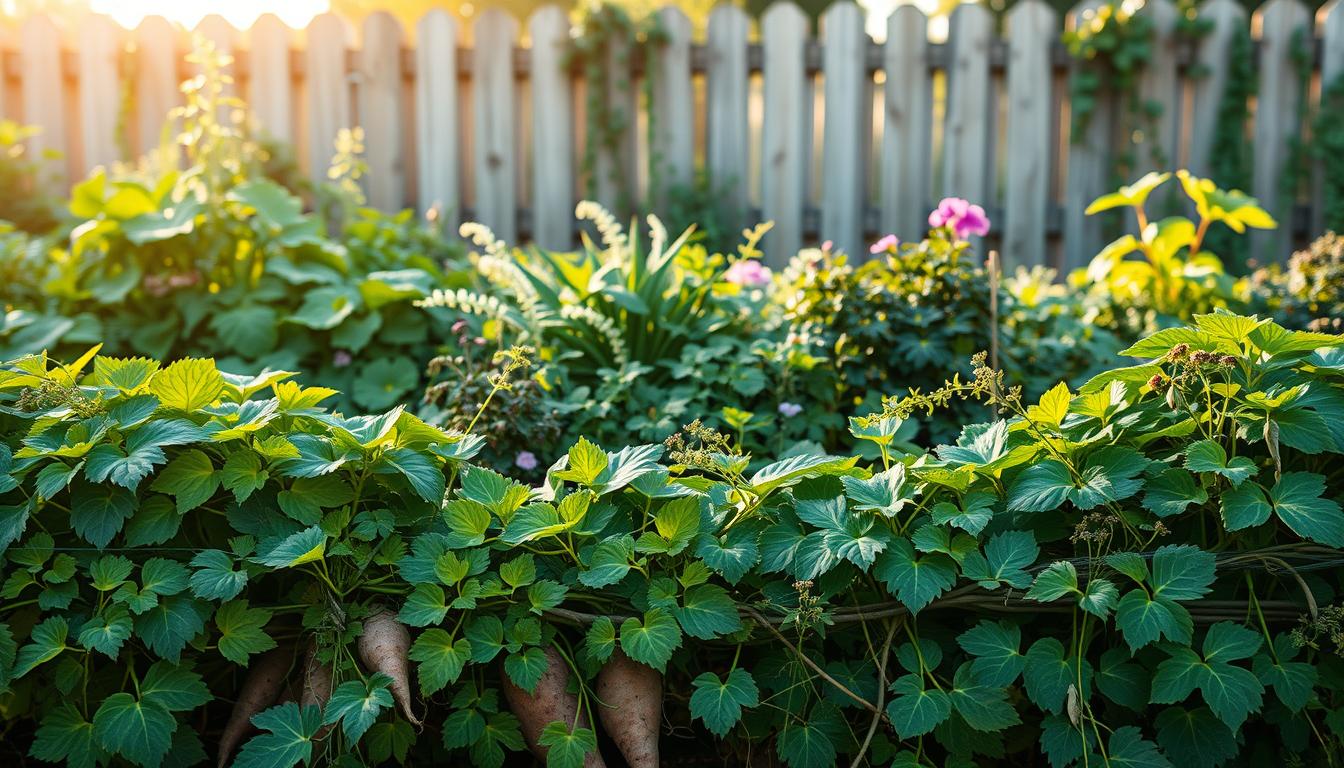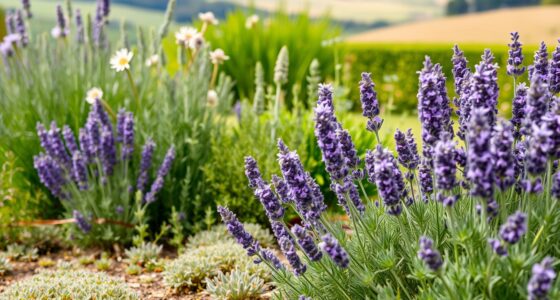Imagine wandering through your garden, a sense of satisfaction enveloping you as you see your sweet potatoes thriving. With rich, deep hues and lush vines, they carry the promise of delightful meals ahead. Yet, did you know that the secret to achieving this bountiful harvest often lies in partnering them up with other plants? Discovering the perfect companions for your sweet potatoes not only maximizes your garden space but also promotes plant health and improves flavor. This sweet potato companion planting guide will illuminate the myriad of benefits of companion planting, ensuring you cultivate a rewarding and fruitful garden.
Key Takeaways
- Companion plants for sweet potatoes can significantly enhance growth and flavor.
- Understanding the benefits of companion planting can lead to healthier crops.
- Effective pest management can be achieved by combining sweet potatoes with the right plants.
- Utilizing this sweet potato companion planting guide will help maximize your garden’s potential.
- Discovering ideal partners for sweet potatoes will enrich your gardening experience.
Understanding Sweet Potatoes and Their Growth Needs
Getting to know the growth needs of sweet potatoes is crucial for successful cultivation. As you dive into this journey, you’ll discover how to grow sweet potatoes effectively while ensuring they thrive alongside companion plants. By adhering to their specific requirements, you can enhance your organic gardening with sweet potatoes.
Growth Requirements
Sweet potatoes flourish when provided with abundant nutrients and moisture. Generally, they prefer a well-drained environment. You should ensure the soil is rich in organic matter and consistently moist, particularly during the growing season. Proper attention to their growth requirements will yield a bountiful harvest.
Soil Preferences
This versatile vegetable grows best in soil that has a pH of 5.8 to 6.2, as this range promotes nutrient absorption. Amendments like compost can significantly enhance soil quality, which is vital for a healthy crop. For those adhering to the sweet potato companion planting guide, the soil should accommodate both plants effectively.
Light and Temperature Needs
Sweet potatoes thrive in full sunlight, requiring at least 6 hours of exposure daily. Warm temperatures between 70 to 85 degrees Fahrenheit are optimal for their growth. Understanding these light and temperature needs will help you create the perfect environment for both sweet potatoes and their companions to flourish.
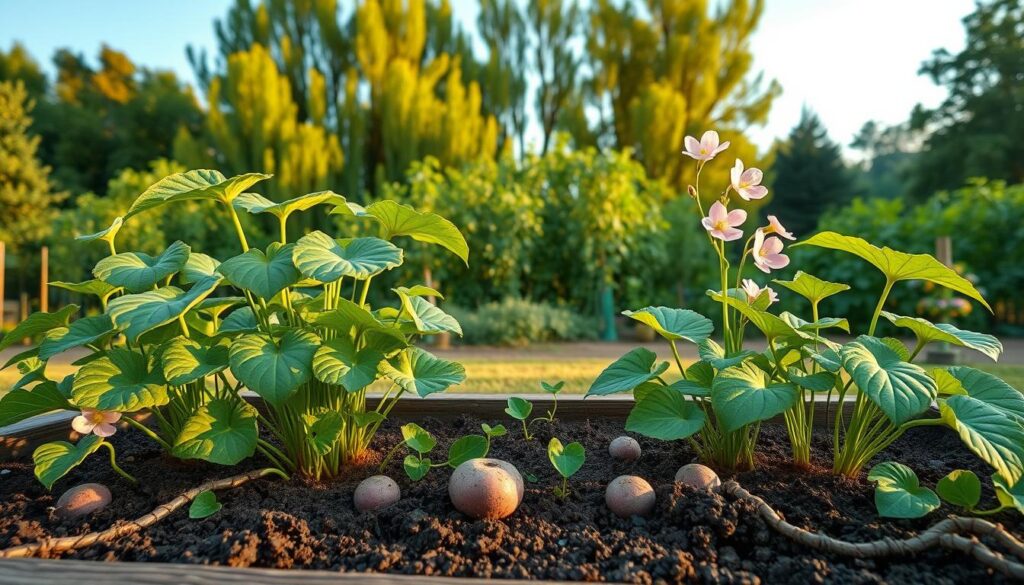
| Growth Aspect | Ideal Conditions |
|---|---|
| Soil Type | Well-drained, rich in organic matter |
| pH Level | 5.8 to 6.2 |
| Moisture | Consistent moisture during growing season |
| Sunlight | At least 6 hours of full sun |
| Temperature | 70 to 85 degrees Fahrenheit |
Benefits of Companion Planting
Engaging in companion planting can transform your garden experience. The benefits of companion planting extend beyond just growing healthy crops and encompass improved soil health, natural pest control, and even enhanced flavor and yield of your produce. By selecting successful sweet potato companion plants, you create a harmonious ecosystem that supports the growth of plant combinations for sweet potatoes. Let’s explore these benefits in more detail.
Improved Soil Health
Utilizing companion planting techniques enriches soil quality. Certain plants, such as legumes, have the ability to fix nitrogen in the soil. This not only provides essential nutrients for your sweet potatoes but also encourages beneficial microbial activity. Improved soil health leads to stronger plants that are more resilient against diseases and pests.
Pest Control
Companion planting naturally enhances pest management in your garden. Including plants that repel specific insects, such as marigolds or nasturtiums, can deter harmful pests from invading your sweet potato crops. By fostering a diverse plant community, you create an environment where beneficial insects thrive, further reducing pest issues.
Enhanced Flavor and Yield
Plant combinations for sweet potatoes can affect not just the yield but also the flavor of your produce. Complementary plants can influence the growth conditions of sweet potatoes, resulting in tastier and more abundant harvests. By grouping compatible species, you boost the overall productivity of your garden, ensuring that each harvest exceeds expectations.

Ideal Companion Plants for Sweet Potatoes
Finding the right companions for your sweet potatoes can significantly enhance their growth and yield. The ideal companion plants for sweet potatoes not only support one another but also create a thriving ecosystem in your garden. When selecting companions, consider those that provide benefits such as nitrogen fixation, structural support, and pest deterrence. Here are some excellent options to consider.
Beans
Beans serve multiple purposes that align perfectly with companion planting tips for sweet potatoes. These legumes fix nitrogen in the soil, improving nutrient availability. In addition to enriching the soil, their climbing habits can provide much-needed support for the sprawling vines of sweet potatoes. You will notice healthier plants and possibly a more bountiful harvest.
Corn
Corn is another fantastic companion for sweet potatoes, acting as a natural trellis. Its tall stalks allow sweet potato vines to grow vertically, minimizing ground competition for sunlight and nutrients. This arrangement not only enhances space utilization but also encourages better air circulation around the plants, which can help prevent disease.
Marigolds
For both beauty and pest control, marigolds are a top pick among ideal companion plants for sweet potatoes. These vibrant flowers not only add a splash of color to your garden but also help repel pests like nematodes. By integrating marigolds into your planting scheme, you can protect the sweet potatoes while creating an attractive garden space.
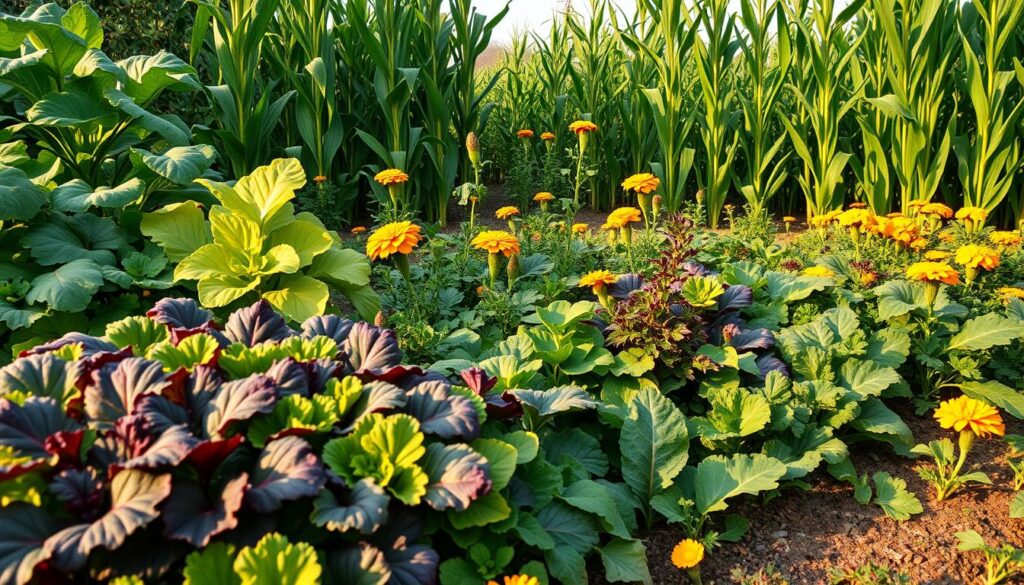
Incorporating these plants into your garden not only fosters healthy growth for your sweet potatoes but also embodies the principles of effective companion planting. By creating a supportive environment, you will likely experience enhanced yields and a reduction in pest problems.
Companion Plants to Avoid
When engaging in organic gardening with sweet potatoes, it is vital to recognize certain plants that can hinder their growth. Understanding companion plants to avoid helps maintain healthy crops and reduces the risk of diseases. Here are a couple of categories that you should keep in mind when planning your garden layout.
Nightshades
Nightshades, including tomatoes and potatoes, pose a significant risk to sweet potatoes. These plants compete for similar nutrients in the soil, which can stunt growth. Additionally, they can spread diseases, such as blight. Keeping nightshades away from your sweet potatoes ensures a more robust and resilient crop.
Strongly Aromatic Herbs
While some herbs can benefit sweet potatoes, strongly aromatic ones may create challenges. Plants like rosemary and mint can overwhelm the available space and nutrients essential for sweet potato growth. It’s beneficial to plant these herbs separately or in moderation to prevent them from dominating the garden environment.
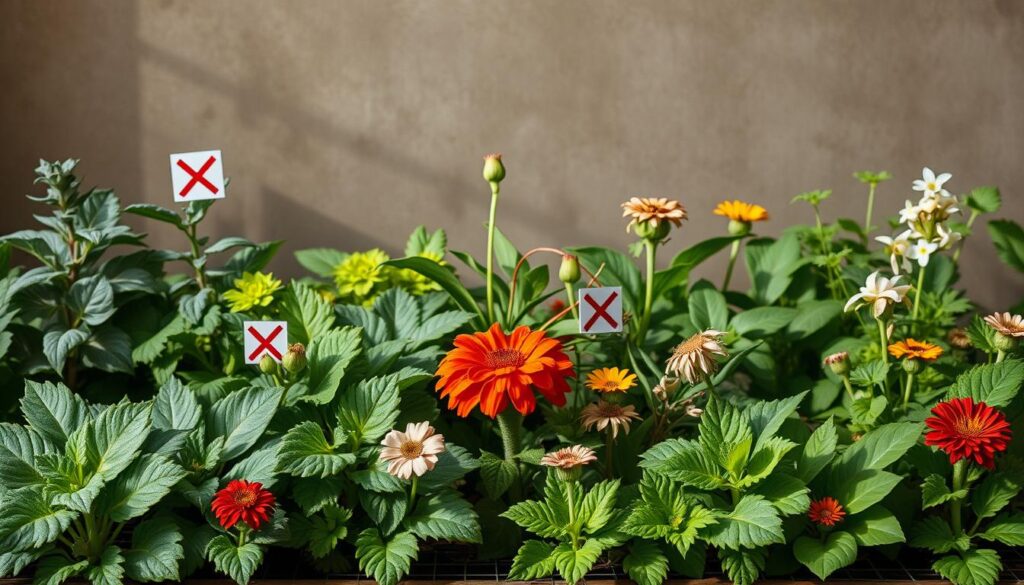
The Role of Legumes in Companion Planting
Legumes play a crucial role in your sweet potato companion planting guide. These nitrogen-fixing plants, like beans and peas, enrich the soil by converting atmospheric nitrogen into a form usable by nearby crops. This process greatly benefits the health of your sweet potatoes and enhances overall garden performance.
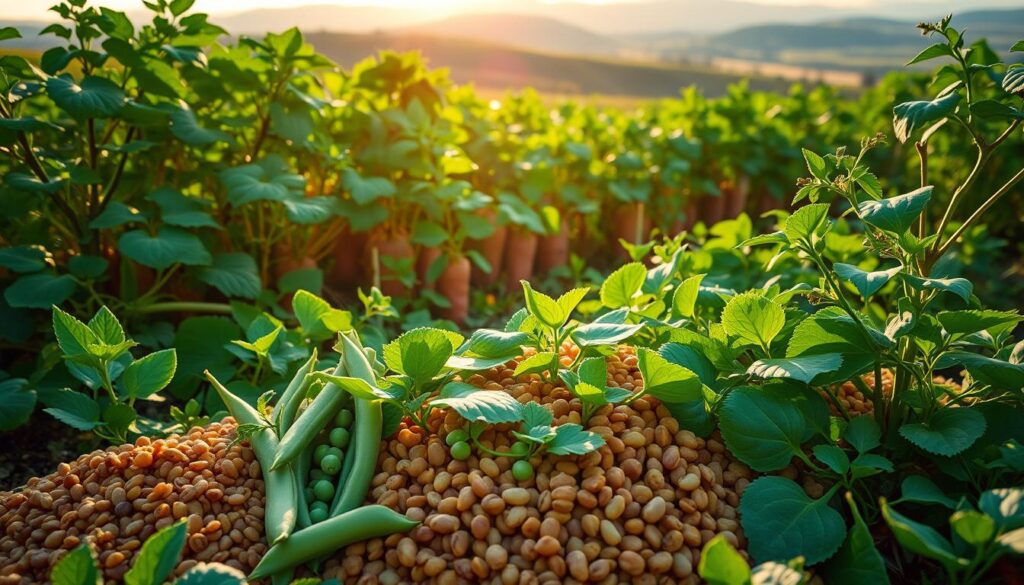
Nitrogen Fixation
Nitrogen fixation is an essential function of legumes for sweet potatoes. This process not only boosts soil fertility but also reduces your need for synthetic fertilizers. As legumes grow, they establish a symbiotic relationship with soil bacteria, capturing nitrogen from the air and storing it in their root nodules. When these plants decompose, they release this nutrient back into the soil, providing sustenance for your sweet potatoes and other crops.
Enhancing Growth
Incorporating nitrogen-fixing plants like legumes into your planting strategy promotes healthy growth in sweet potatoes. The added nutrients help sweet potatoes thrive, leading to richer flavor and increased yields. When cultivating these plants alongside sweet potatoes, you create a beneficial ecosystem that can withstand pests and disease, enhancing the vitality of your garden. Take advantage of this synergy to maximize the potential of your garden and enjoy a bountiful harvest.
Herbs That Pair Well with Sweet Potatoes
Using herbs for sweet potatoes not only enhances the flavor but also contributes positively to their growth. When planning your garden, consider incorporating these aromatic herbs as companion plants for sweet potatoes. They offer various benefits, from pest deterrence to flavor enhancement, creating a thriving garden ecosystem.
Basil
Basil thrives alongside sweet potatoes, adding depth to your culinary creations. This herb not only elevates the taste profile of dishes but also works to repel unwanted insects that may harm your sweet potato plants. The presence of basil encourages a healthier garden environment.
Oregano
Oregano serves as a natural pest deterrent, effectively supporting the health of sweet potatoes. Its growth alongside these tubers helps ensure that pests stay away, allowing for a more vibrant and productive crop. Including oregano in your garden aids in maintaining a balanced ecosystem, benefiting all plants involved.
Thyme
Thyme is another excellent herb that pairs well with sweet potatoes. Its aromatic properties act as a barrier against pests, while its flowers attract beneficial pollinators to your garden. The inclusion of thyme promotes a harmonious growing environment, enhancing the overall health of sweet potato plants.
| Herb | Benefits | Impact on Sweet Potatoes |
|---|---|---|
| Basil | Enhances flavor and repels insects | Healthier plants and improved flavor |
| Oregano | Natural pest deterrent | Stronger crop with reduced pest pressure |
| Thyme | Aromatic pest barrier and attracts pollinators | Promotes growth and biodiversity |
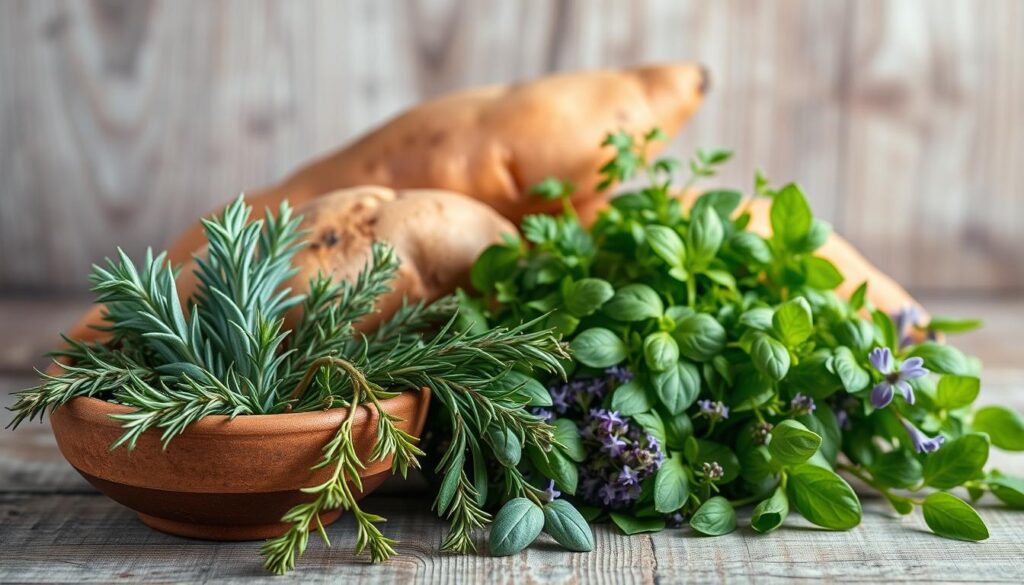
Flowers That Attract Beneficial Insects
In your garden, incorporating flowers for sweet potatoes not only adds beauty but also enhances your garden’s health. These flowers are instrumental in attracting beneficial insects that aid in sweet potato pest management. Let’s explore three key flowers that can make a significant difference in your garden ecosystem.
Nasturtiums
Nasturtiums are vibrant flowers that draw in various pollinators and predatory insects. By planting these flowers near your sweet potatoes, you help create a natural balance in your garden. They can discourage certain pests while inviting beneficial insects that play an essential role in pest control.
Borage
Borage is another excellent option to consider. This plant not only improves soil quality through its deep roots but also attracts beneficial insects like bees. Pollinators help your sweet potato plants flourish, increasing both yield and vitality.
Calendula
Calendula flowers are known for their ability to deter common pests through their unique scent and oils. Planting calendula near your sweet potatoes creates a protective barrier against harmful insects, enabling a healthier garden environment overall.
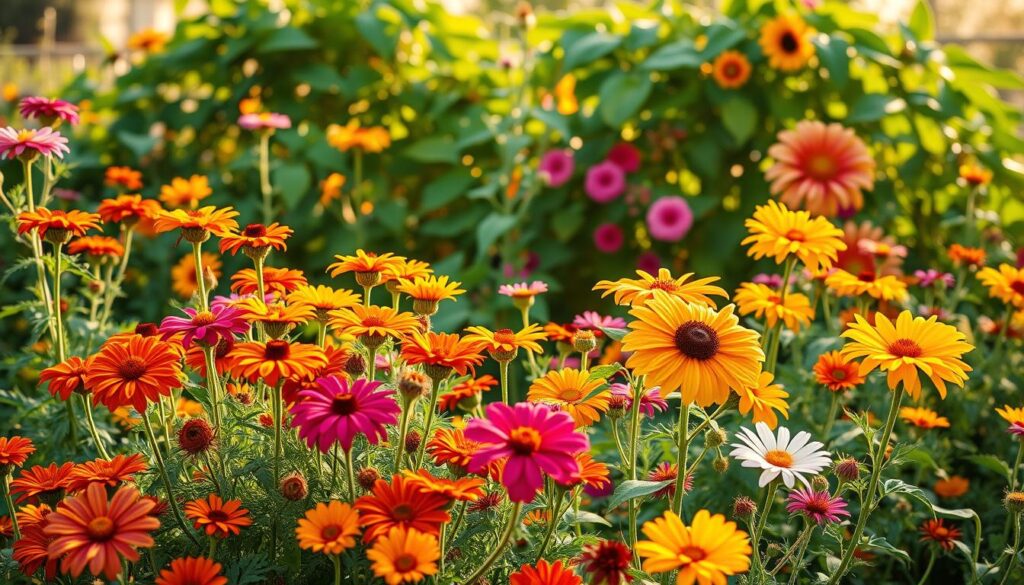
| Flower Type | Attracts | Benefits |
|---|---|---|
| Nasturtiums | Pollinators, Predatory insects | Discourages pests, enhances health |
| Borage | Bees | Improves soil quality, increases yield |
| Calendula | Pest-repelling insects | Deters harmful pests, supports ecosystem |
By selecting these flowers, you will cultivate a thriving environment for your sweet potatoes. Attracting beneficial insects through flowers not only beautifies your garden but significantly advances your sweet potato pest management efforts.
Using Companion Plants for Pest Management
In the quest for effective pest management strategies for sweet potatoes, companion planting offers a natural and efficient solution. By selecting the right plants, you not only enhance your garden’s biodiversity but also create a protective environment for your sweet potatoes. Certain plants have natural pest-repelling properties, while others attract beneficial insects that serve as natural predators to pests.
Natural Pest Repellents
Many companion plants for pest control possess unique scents or compounds that deter pests. For instance, marigolds are renowned for their ability to ward off nematodes, making them an excellent choice to plant alongside sweet potatoes. Similarly, basil can help in keeping flies at bay, ensuring a healthier crop. Integrating these plants into your garden not only minimizes the need for chemical interventions but also promotes a more organic gardening approach.
Attracting Predatory Insects
In addition to repelling unwanted pests, some companion plants attract predatory insects. With options like dill and yarrow, you can entice ladybugs and lacewings, which feed on common garden pests. Creating a diverse planting scheme with these companions enhances your pest management strategies for sweet potatoes, ensuring that your garden remains resilient and thriving without excessive reliance on pesticides.
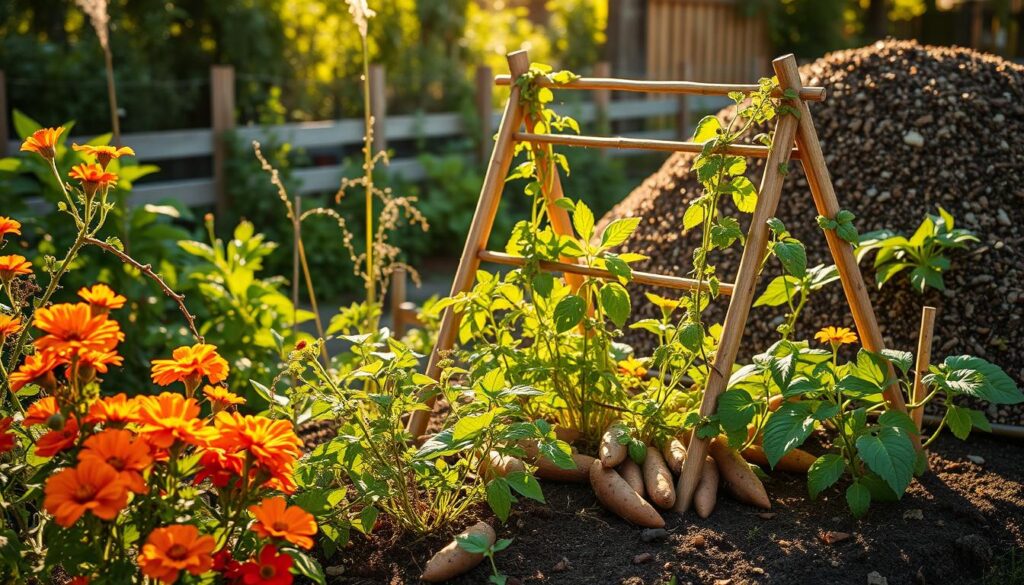
The Importance of Crop Rotation
Crop rotation plays a crucial role in the sustainability and productivity of your garden, particularly when growing sweet potatoes. By implementing a well-planned crop rotation for sweet potatoes, you can reap numerous benefits that enhance soil health and yield, while mitigating pest infestations.
Benefits for Sweet Potatoes
Engaging in crop rotation for sweet potatoes offers several advantages:
- Soil fertility improvement: Rotating crops enhances soil nutrients, preventing depletion.
- Increased disease resistance: This practice disrupts the life cycles of pests and diseases commonly affecting sweet potatoes.
- Water conservation: Different crops have various water needs, which can lead to better overall irrigation efficiency.
- Enhanced yields: Diverse planting encourages healthier plants and can lead to increased sweet potato harvest quantities.
Suitable Rotate Options
When considering suitable rotation options with sweet potatoes, focus on planting crops that do not compete for the same nutrients or attract similar pests. Effective choices include:
| Crop Type | Benefits |
|---|---|
| Legumes | Add nitrogen to the soil, promoting healthier sweet potato growth. |
| Brassicas (e.g., kale, cabbage) | Help break pest cycles and can be harvested before sweet potatoes need space. |
| Root vegetables (e.g., carrots, beets) | Enhance soil structure and reduce competition for nutrients. |

Creating a Companion Planting Plan
Designing a companion planting plan for sweet potatoes enhances both the overall garden aesthetics and crop productivity. A thoughtful garden layout incorporating various companion plants can lead to a thriving ecosystem that supports your sweet potatoes. Proper planning and timing is essential to utilize space efficiently and ensure that each plant receives sufficient light.
Garden Layout Tips
Efficient use of your available space is key to a successful garden. Here are some effective garden layout tips to consider:
- Divide your garden into zones based on plant height and light needs.
- Utilize trellises for climbing plants, allowing them to grow vertically and save ground space.
- Group companion plants together to foster cooperation among them, which can improve nutrient uptake.
- Incorporate mulched pathways to minimize soil compaction and allow easy access to all areas of your garden.
Seasonal Planting Strategies
To optimize crop yields, consider planting in succession throughout the growing season. Seasonal planting strategies include:
- Early planting of legumes to fix nitrogen in the soil, benefiting sweet potatoes later.
- Interplanting fast-growing crops like radishes or lettuce alongside your sweet potatoes to maximize space.
- Timing your planting around the first and last frost dates to ensure healthy growth periods.
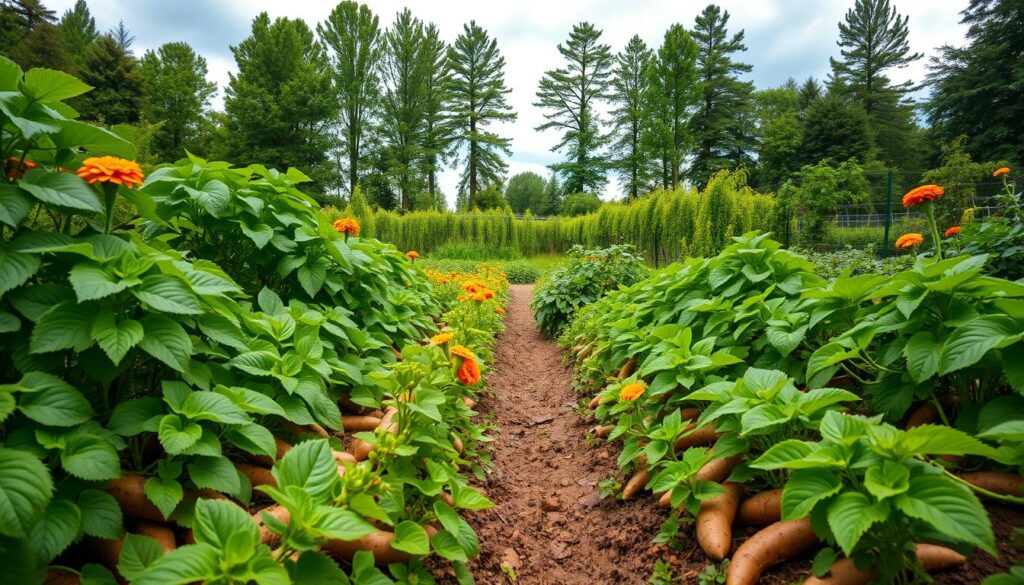
Watering and Maintenance Tips for Companion Plants
Establishing a thriving garden with sweet potatoes and their companion plants requires attention to watering and maintenance practices. Proper watering techniques are essential, particularly in the early stages of growth. Understanding the specific water needs of your sweet potatoes and their companions will ensure that every plant flourishes. Implementing effective mulching strategies will also promote healthy root systems.
Water Needs
When considering the watering tips for sweet potatoes, remember that these plants enjoy consistent moisture. Monitor the soil regularly to prevent it from drying out. Different companion plants may have unique water requirements:
| Plant Type | Water Requirement |
|---|---|
| Sweet Potatoes | Moist soil but avoid waterlogging |
| Beans | Moderate watering, allow soil to dry between |
| Marigolds | Water regularly, soil should not dry out completely |
| Basil | Slightly moist soil |
Mulching Suggestions
Mulching plays a pivotal role in companion plants maintenance. This practice not only retains soil moisture but also prevents weed growth and stabilizes soil temperature. Consider these options for effective mulching:
- Straw – Great for moisture retention and weed suppression.
- Bark chips – Provide an aesthetic layer while maintaining moisture.
- Grass clippings – An inexpensive way to enrich the soil as they decompose.
Incorporating these watering tips for sweet potatoes and choosing the right mulch will significantly enhance the overall health of your vegetable garden.

How to Monitor Plant Health in Your Garden
Maintaining a vibrant garden requires consistent effort to monitor plant health. By regularly assessing your plants, you can identify any issues early on, which leads to increased yields and healthier crops, particularly sweet potatoes. Knowing what to look for is essential for effective management.
Signs of Pests and Diseases
When you monitor plant health, keep an eye out for sweet potato pest indicators such as:
- Wilting leaves that lack turgidity
- Discoloration or yellowing foliage
- Unusual spots on leaves, which may indicate disease
- Visible pests, such as aphids or beetles
- Webbing or a sticky residue on plants
Each of these signs serves as a warning that something is amiss. Early detection allows you to take necessary action against pests or diseases before they spread and cause greater harm.
Healthy Companion Plant Indicators
Healthy companion plants exhibit certain traits that signal favorable growing conditions. Look for:
- Thriving blooms that attract beneficial insects
- Rich green foliage indicating robust health
- Consistent growth habits that align with expected patterns
Monitoring these indicators can enhance your overall understanding of garden health. By ensuring that your plants are thriving, you contribute indirectly to the success of your sweet potatoes.
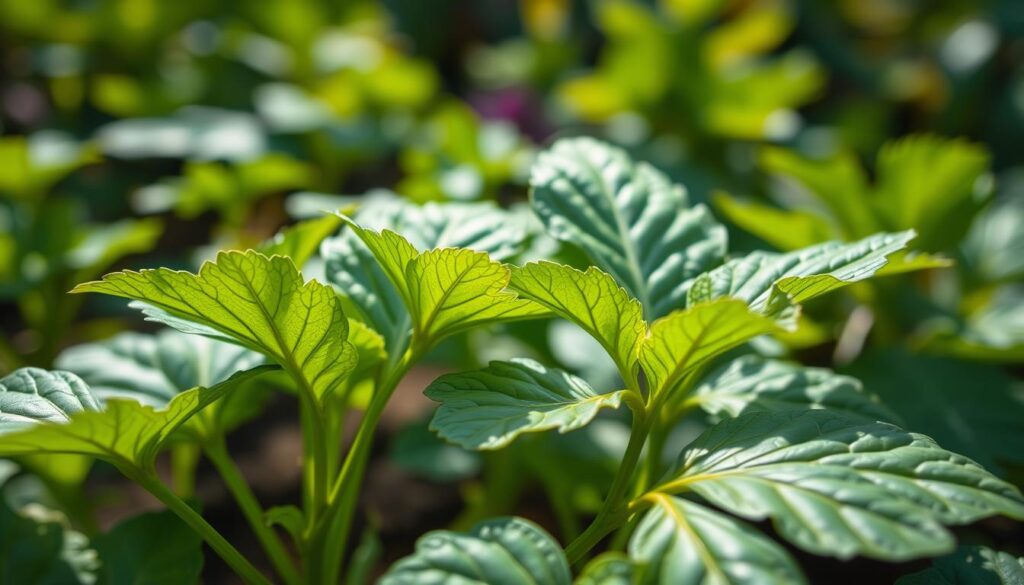
Harvesting Sweet Potatoes and Their Companions
Knowing when to harvest sweet potatoes can significantly affect the quality of your yield. Harvest at the right moment to benefit from optimal taste and texture. Identifying the proper time involves observing the plant’s leaves, which turn yellow as the tubers mature. As you approach harvest day, dig gently around the base, taking care to protect the sweet potatoes from damage.
When to Harvest
Typically, sweet potatoes are ready for harvest about 90 to 120 days after planting, depending on the variety. Closely monitor the following signs:
- Leaves turn yellow, indicating maturity.
- Flowers may appear, showing the end of growth.
- Testing the size of the tubers by lightly digging around them.
Post-Harvest Care
After harvesting, proper post-harvest care for sweet potatoes is essential to ensure their longevity and quality. Follow these steps for the best results:
- Allow the sweet potatoes to cure in a cool, dark, well-ventilated area for about one to two weeks to enhance flavor.
- Store them in a humid environment to prevent shriveling.
- Check regularly for any signs of spoilage and remove affected tubers to safeguard the rest.

Consider harvesting your companion plants in tandem with your sweet potatoes to maximize efficiency and prevent waste. Integrated harvesting can help you maintain a bountiful and efficient garden.
Continuing Companion Planting Practices
As you conclude one growing season, it’s time to reflect on your companion planting strategy. Evaluating your success is key to understanding which plants thrived and which may need rethinking. Keeping a detailed record of factors such as plant performance, pest encounters, and overall yield will give you valuable insights into how to adapt gardening practices in subsequent seasons.
Consider experimenting by swapping out certain companion plants for alternatives that align better with your findings. By documenting your experiences and engaging in continual improvement, you’ll become more adept at creating a productive garden. This honest assessment not only informs your future choices but also enhances your overall gardening experience.
Remember, the essence of continuing companion planting lies in its adaptability. Each season presents unique challenges and opportunities that can help you refine your approach and optimize your results. By taking the time to evaluate your planting success and making necessary adjustments, your garden can flourish like never before.
